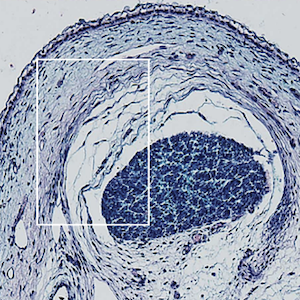Real-life effectiveness of rituximab in different subsets of idiopathic inflammatory myopathies

All claims expressed in this article are solely those of the authors and do not necessarily represent those of their affiliated organizations, or those of the publisher, the editors and the reviewers. Any product that may be evaluated in this article or claim that may be made by its manufacturer is not guaranteed or endorsed by the publisher.
Authors
Objective. Idiopathic inflammatory myopathies (IIM) are heterogeneous autoimmune diseases including dermatomyositis (DM), polymyositis (PM), immune-mediated necrotizing myopathy (IMNM), and anti-synthetase syndrome (ASS). Treatment typically involves high-dose corticosteroids (CCS) and conventional synthetic disease-modifying antirheumatic drugs (csDMARD). Rituximab (RTX) has shown effectiveness in refractory cases. Our real-life study aimed to assess the safety and effectiveness of RTX treatment in IIM patients.
Methods. We conducted a retrospective study including patients with IIM refractory to both high-dose CCS and csDMARD. Patients were treated with a full RTX dose (2 g every 6 months). Laboratory and clinical data, along with the total improvement score (TIS), were assessed to evaluate RTX effectiveness and safety. Data were analyzed using GraphPad Prism (v. 9.5.1).
Results. A total of 41 patients received the full RTX dose (15 DM, 15 ASS, 5 PM, and 6 IMNM). This treatment regimen significantly reduced daily CCS usage from 15 mg [interquartile range (IQR) 12.5-25 mg] at baseline to 5 mg (IQR 5-5 mg) after 1 year of treatment (p<0.001). Additionally, over 90% of patients achieved at least a minimal TIS at 12 months, which was maintained at 24 months. At 1 year, RTX persistence was 68.3%. Although reductions in serum immunoglobulins (Ig)A and IgM levels were observed, no cases of severe hypogammaglobulinemia (IgG<400 mg/dL) occurred. The most common reason for treatment interruption was an adverse skin reaction (6 cases) during RTX infusion, while infections most frequently involved the respiratory tract (5 cases).
Conclusions. RTX demonstrated effectiveness in various subsets of IIMs, often leading to clinical improvement and significantly reducing the CCS dose.
Ethics Approval
The study was approved by the local Ethics Committee (INflammatoy MYositis Registry: study no. 6229, approval no. 84762,2020/11/06; comitatoetico@ policlinico.ba.it).
This work is licensed under a Creative Commons Attribution-NonCommercial 4.0 International License.
PAGEPress has chosen to apply the Creative Commons Attribution NonCommercial 4.0 International License (CC BY-NC 4.0) to all manuscripts to be published.










